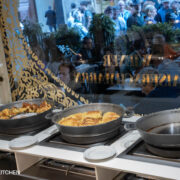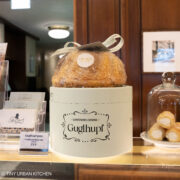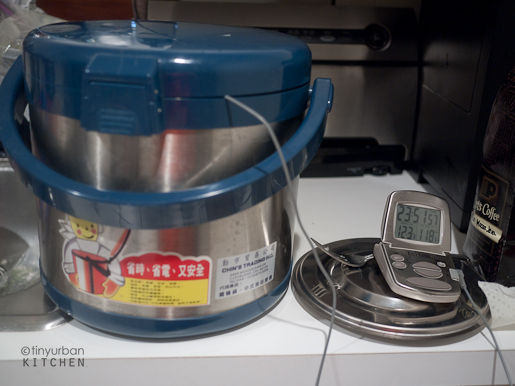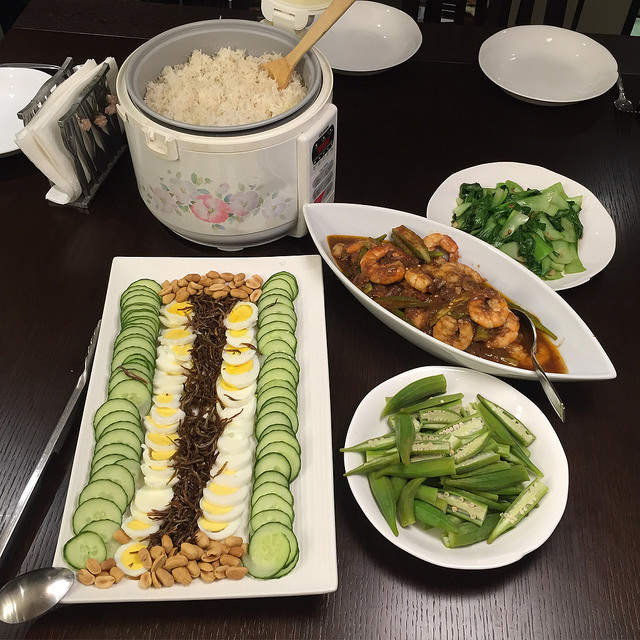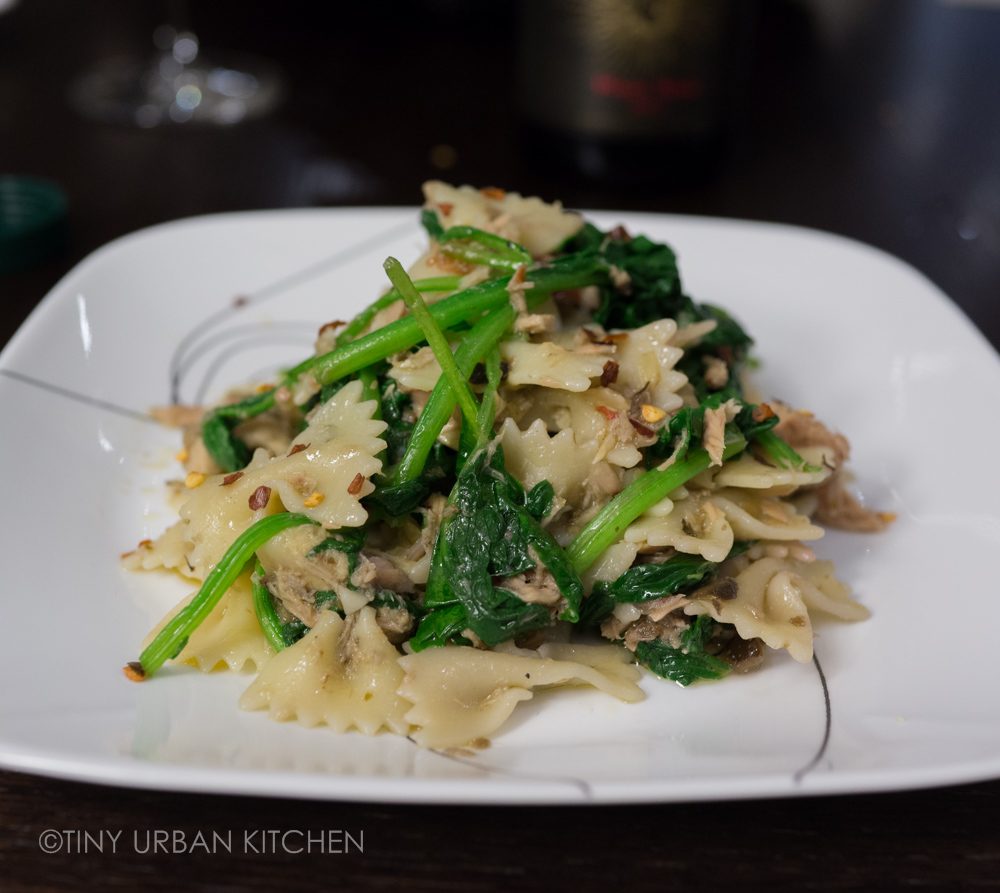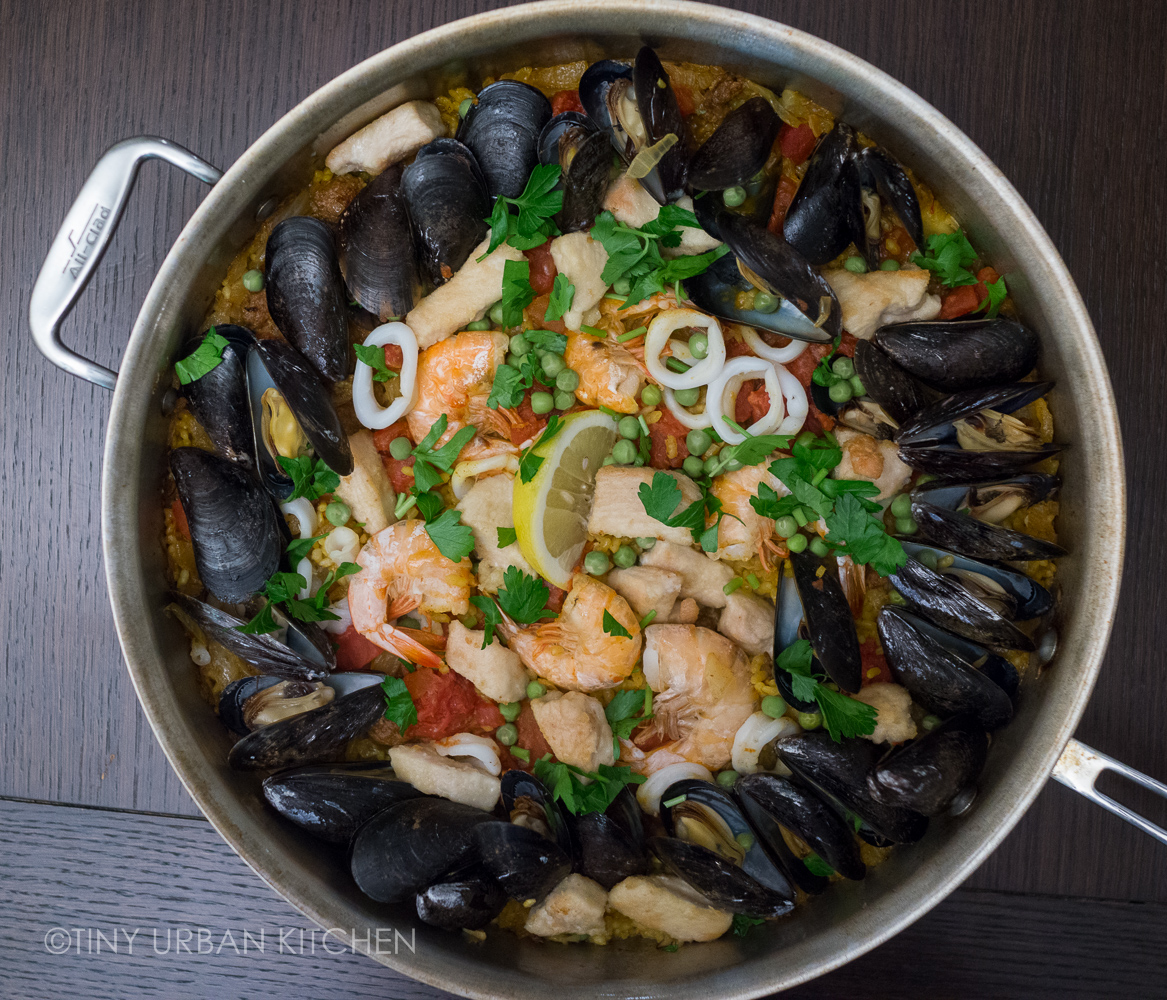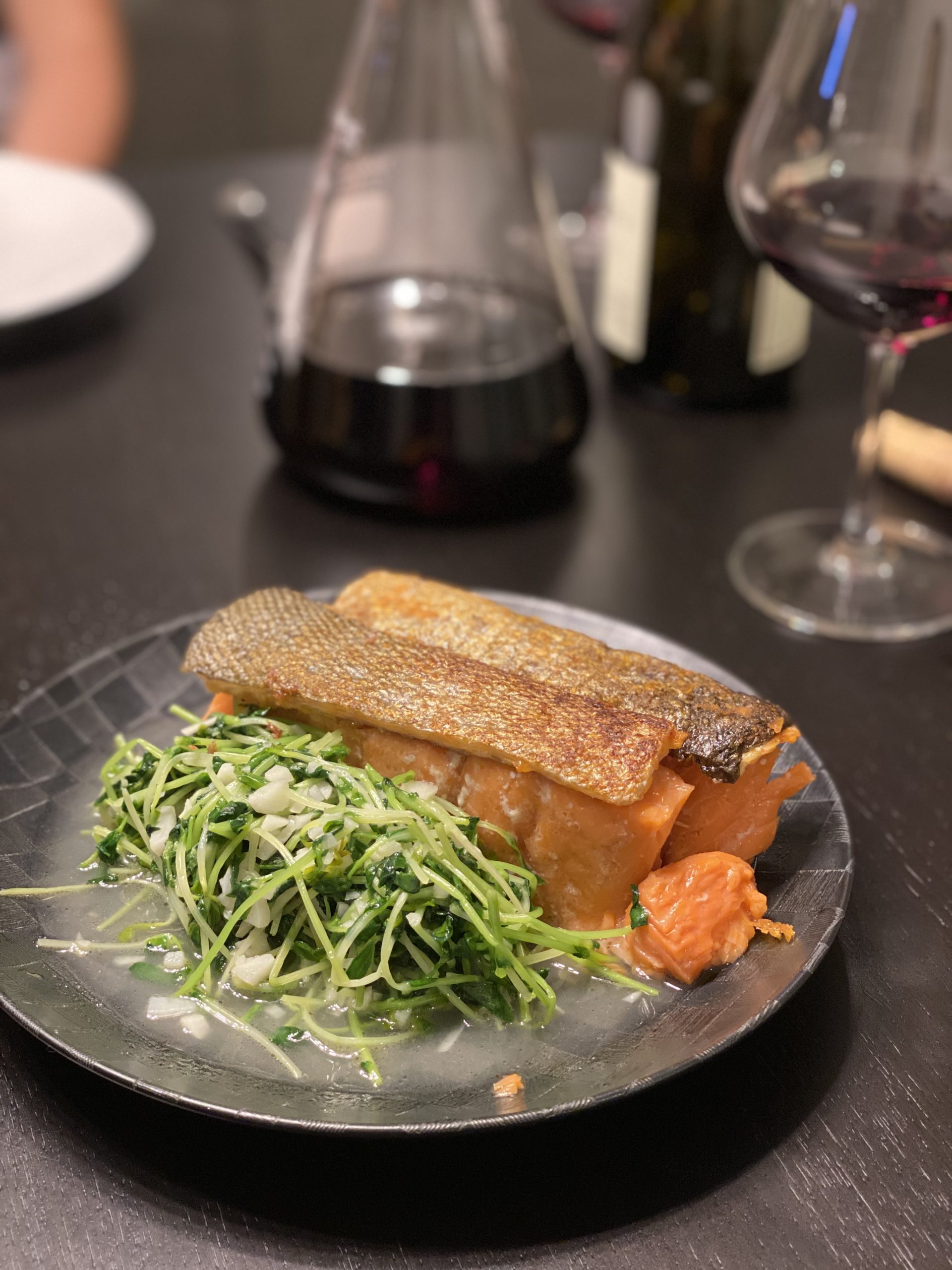
I have a bad habit of overcooking salmon. Ever since I started buying wild-caught salmon (instead of the fatty farm-raised salmon), I've had a harder time baking it in a way that does not dry it out. Farm-raised salmon typically has more fat (I guess they don't have as much room to swim around?) and therefore their meat is more forgiving. Wild-caught salmon, on the other hand, is much leaner, and therefore can easily become tough when overcooked.I've had some success using Bryan's mom's awesome microwave method to make salmon. But what about those times I don't want steamed fish? What if I want a nice pan-seared salmon?
I recently spotted this cool post on how to make sous-vide salmon at home with just a few Ziploc bags and a cast iron pot. Perfect! I would try sous-vide at home! Problem is, I don't have any fancy Le Creuset or Staub cast iron cookware. In fact, I don't think I have any heavy, high quality pots that retain heat well.
My mom had given me one years ago, but I had only used it to make red bean soup. I had no idea if you could even get one in the US, as I almost never read about it. A quick search on Amazon showed that they seem to be pretty available. You even have your choice of brands, from Asian brands like Tiger and Sunpentown to the classic American brand Thermos
and the interesting sounding Thermos Nissan Cook N' Carry
. Prices range anywhere from $60 (the Sunpentown) to around $250 (this crazy two layer one
), though definitely read the reviews before buying one - looks like they vary in quality!
So, I thought I would try sous-vide for the first time by attempting to make salmon in my magic cooker.
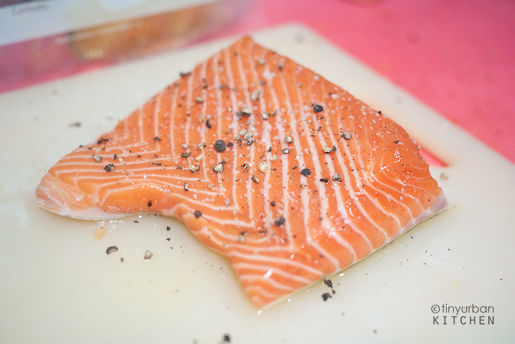
There's really no recipe, although I did loosely base my dish on this Wall Street Journal article. I cut up a pound of wild caught Alaskan King Salmon into two 8-oz pieces, removed the skin (but only on one fillet - more on that later), and generously added salt and pepper on both sides of the fillets. You want to remove the skin because, honestly, sous vide skin tastes pretty awful. It's rubbery, hard to chew, etc. Maybe if I had seared the skin side it would not have been so bad, but I learned the hard way with my side-by-side controlled experiment (sorry Bryan!), that the salmon fillet with the skin tastes worse than the one without!
Note: I did fry up the removed skin into a nice crispy side dish. Yum - tastes good just with some salt and pepper.
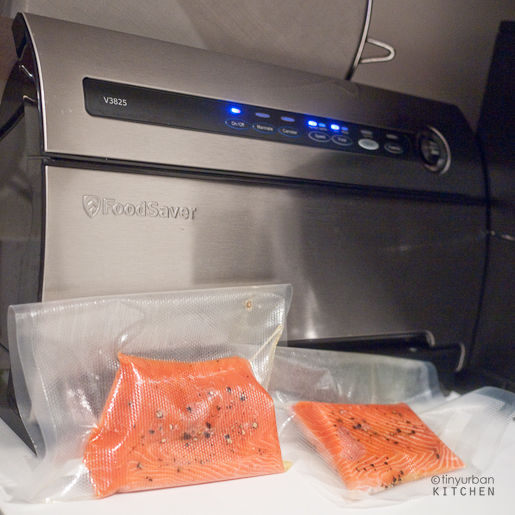
The olive oil bit is tricky. See, you can't pour olive oil directly into a FoodSaver bag because it will get stuck on the sides and trick the machine into thinking that the bag is already sealed when it isn't. To get around this, you need to freeze the oil. Measure out about 1 tablespoon of olive oil per 8-oz serving, put it in a little plastic bag, and freeze it until it has a gel-like consistency. At that point, you can easily put it into the FoodSaver bag without it getting stuck on the sides of the bag.
I actually was in too much of a hurry to do this, so I took a short cut. Slather the oil onto the fish first and very carefully place it into the bag without touching the sides. It's tricky, but do-able. I accidentally got a bit of oil on the side, but then I used a paper towel to clean it up before subjecting it to the FoodSaver machine.
.
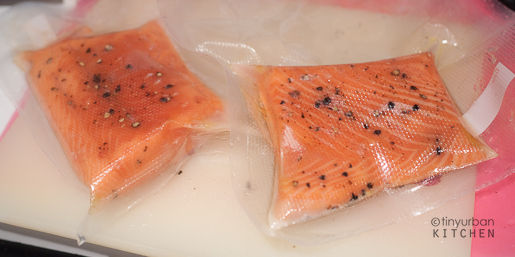
Seal the bags. You can use zipper lock bags as well for this if you don't have a vacuum sealer at home. Check out Wade's post for how to do that.
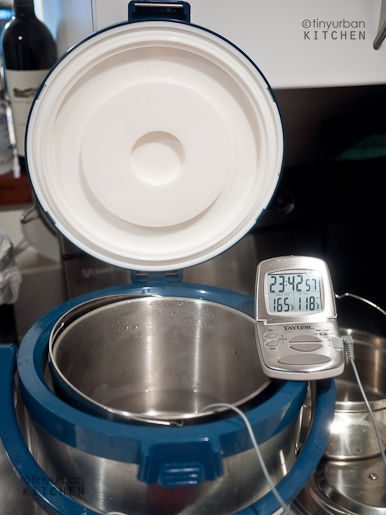
I boiled some water in my electric kettle and then filled the inner pot of my magic cooker with the water. I continued to slowly add cold tap water until the temperature reached around 125° F (52° C). I was shooting for anything between 113° F (45 °C) and 120° F (49 °C), since various recipes seemed to have different temperatures.
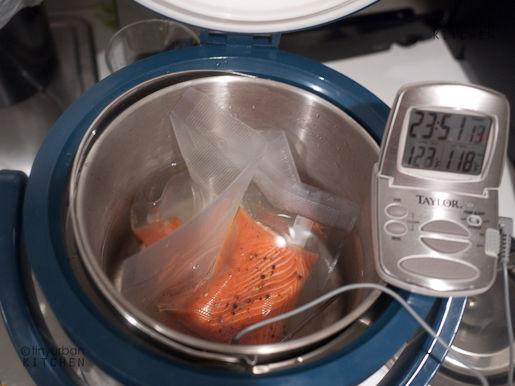
I then dunked my salmon in, sealed up the magic cooker, and waited for 13 minutes. After about 6 minutes, I noticed the temperature had dropped to around 119°F (48°C), which is to be expected since the cold salmon probably brought down the temperature several degrees. The temperature stayed pretty steady after that. In fact, I came back after dinner (at least an hour later), and the water bath was still holding steady at around 116°F (47 °C).
When the 13 minute mark came (I had set my trusty thermometer alarm to go off), I took the salmon pieces out, quickly seared them on a pan for about 2 minutes (just enough to brown the edge), and then served!
It came out beautifully! Like a beautiful oil-poached salmon, but made with much less oil.
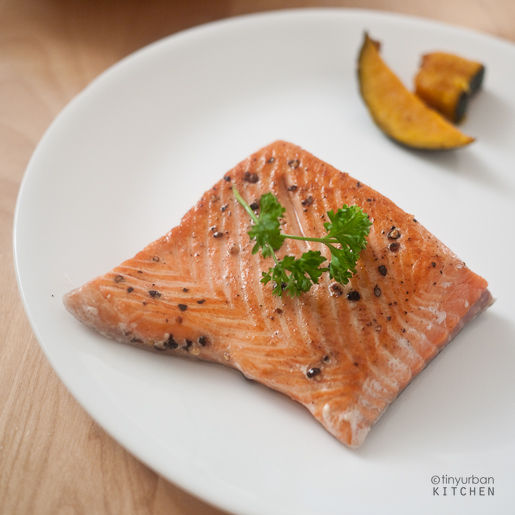
The inside was moist, tender, buttery, and all around fantastic! Finally, I can cook wild-caught salmon and it will be predictably soft, tender, and never overcooked. Check out the texture inside. Doesn't that just look so good?
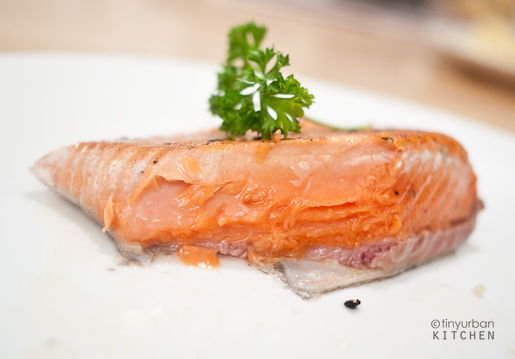
I'm really excited to try other methods next. I plan on investing in a cast-iron Dutch oven at some point. I'm curious how it compares. I have to say, it's going to be hard for me to go back to cooking salmon any other way, as I think I've fallen in love with this sous-vide salmon texture!
I think I'm going to try steak next!!
All Rights Reserved










